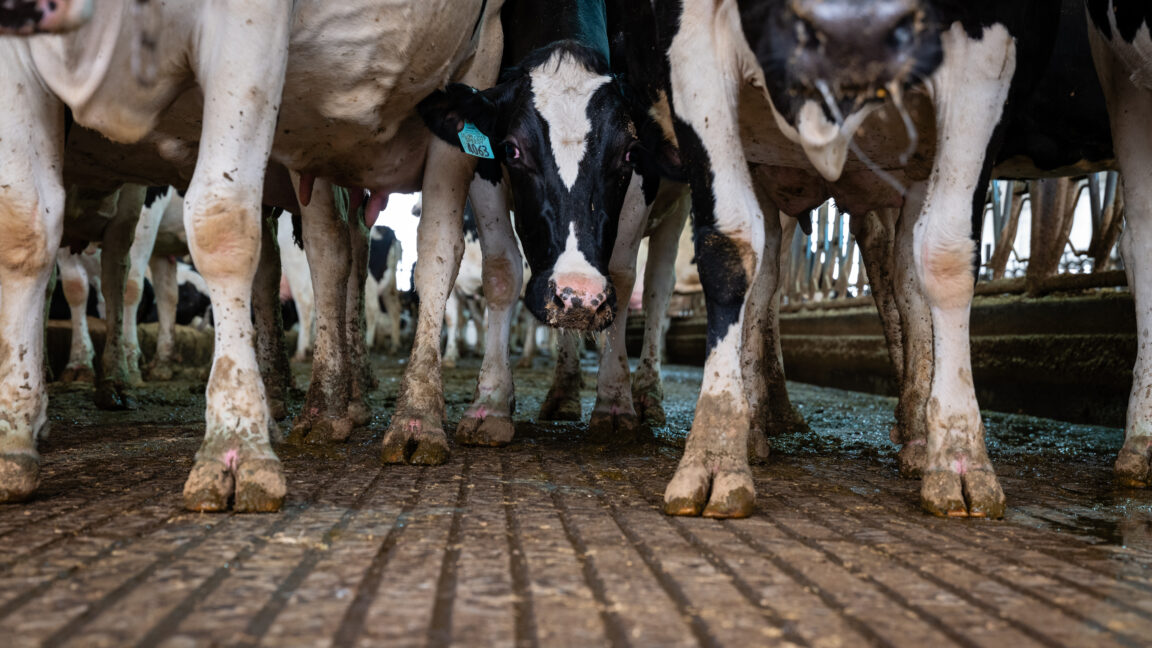
H5N1 bird flu spills over again; Nevada cows hit with different, deadly strain
arstechnica.com
Yikes H5N1 bird flu spills over again; Nevada cows hit with different, deadly strain The finding suggests a new spillover event, further dashing hopes of containment. Beth Mole Feb 5, 2025 5:52 pm | 10 Cows standing in their pens in North Freedom, Wisconsin on May 8, 2024. Credit: Getty | Matthew Ludak Cows standing in their pens in North Freedom, Wisconsin on May 8, 2024. Credit: Getty | Matthew Ludak Story textSizeSmallStandardLargeWidth *StandardWideLinksStandardOrange* Subscribers only Learn moreCows in Nevada have been infected with a strain of H5N1 bird flu different from the strain detected in all other herds to this point in the ongoing dairy outbreak. It's the same strain that killed a Louisiana resident in early January and sent a Canadian teenager to intensive care in early November.The new Nevada dairy infections were first detected through milk testing conducted on January 31, according to an update Wednesday by the US Department of Agriculture. Whole genome sequencing confirmed the finding of H5N1 clade 2.3.4.4b, genotype D1.1. To this point, all other dairy herds affected by the outbreak have been infected with H5N1 clade 2.3.4.4b, genotype B3.13.To date, 957 herds across 16 states have been infected with H5N1 since the outbreak began last March. That tally includes four new herds from Nevada.The D1.1 genotype is the predominant strain spreading in migratory birds in the North American flyway this fall and winter, the USDA notes. It has been sporadically spilling over to mammals and commercial poultry in recent months. In December, it spilled over to a resident of Louisiana after contact with wild and backyard birds. The person became critically ill and died, marking the first US H5N1 bird flu death.Until now, federal officials have thought of the current dairy outbreak as the result of a single spillover event, which likely occurred from the virus jumping from wild birds to cows in Texas, possibly sometime in late 2023. The virus then swiftly moved through dairy farms and across state lines as people, equipment, and animals moved around. Health experts worldwide have been appalled by the inability of US officials to halt the single-source transmission as more and more herds have continued to test positive. Now, with a second introduction of the virus, hopes are likely dashed that containment is possible.The spread of H5N1 bird flu in dairy cows is unprecedented; the US outbreak is the first of its kind in cows. Virologists and infectious disease experts fear that the continued spread of the virus in domestic mammals like cows, which have close interactions with people, will provide the virus countless opportunities to spill over and adapt to humans.So far, the US has tallied 67 human cases of H5N1 since the start of 2024. Of those, 40 have been in dairy workers, while 23 were in poultry workers, one was the Louisiana case who had contact with wild and backyard birds, and three were cases that had no clear exposure.Whether the D1.1 genotype will pose a yet greater risk for dairy workers remains unclear for now. Generally, H5N1 infections in humans have been rare but dangerous. According to data collected by the World Health Organization, 954 H5N1 human cases have been documented globally since 2003. Of those, 464 were fatal, for a fatality rate among documented cases of 49 percent. But, so far, nearly all of the human infections in the US have been relatively mild, and experts don't know why. There are various possible factors, including transmission route, past immunity of workers, use of antivirals, or something about the B3.13 genotype specifically.For now, the USDA says that the detection of the D1.1 genotype in cows doesn't change their eradication strategy. It further touted the finding as a "testament to the strength of our National Milk Testing Strategy."Beth MoleSenior Health ReporterBeth MoleSenior Health Reporter Beth is Ars Technicas Senior Health Reporter. Beth has a Ph.D. in microbiology from the University of North Carolina at Chapel Hill and attended the Science Communication program at the University of California, Santa Cruz. She specializes in covering infectious diseases, public health, and microbes. 10 Comments
0 Comentários
·0 Compartilhamentos
·70 Visualizações


